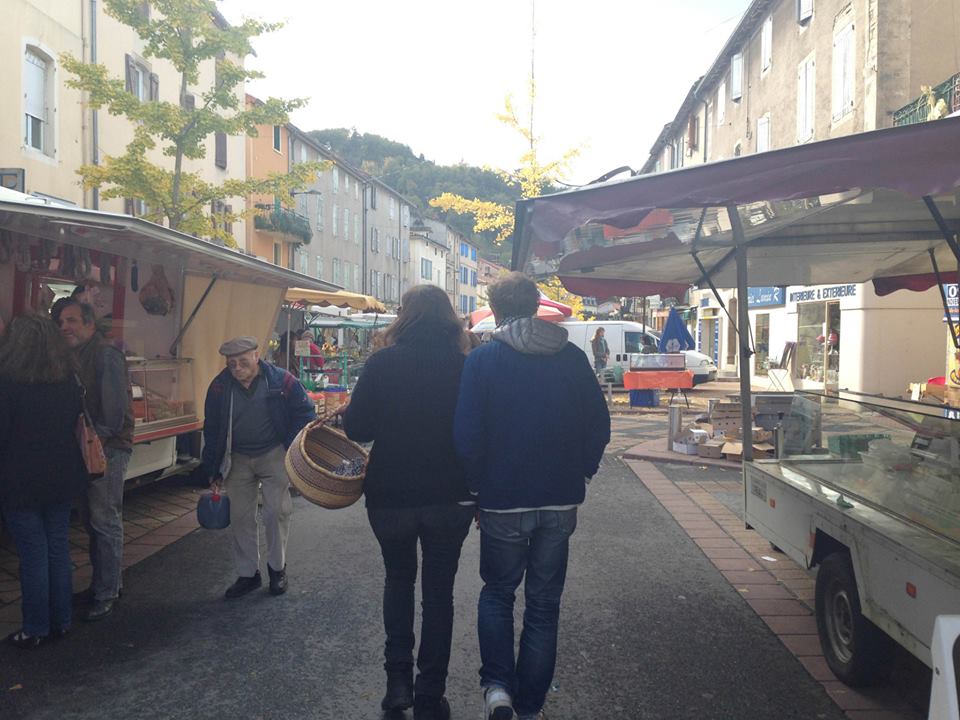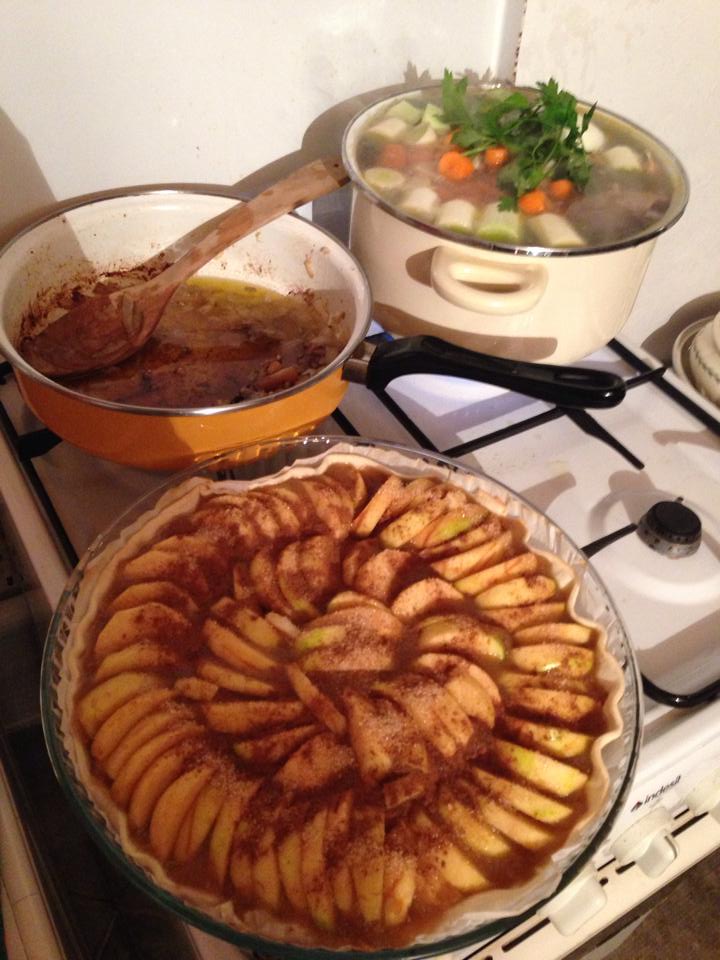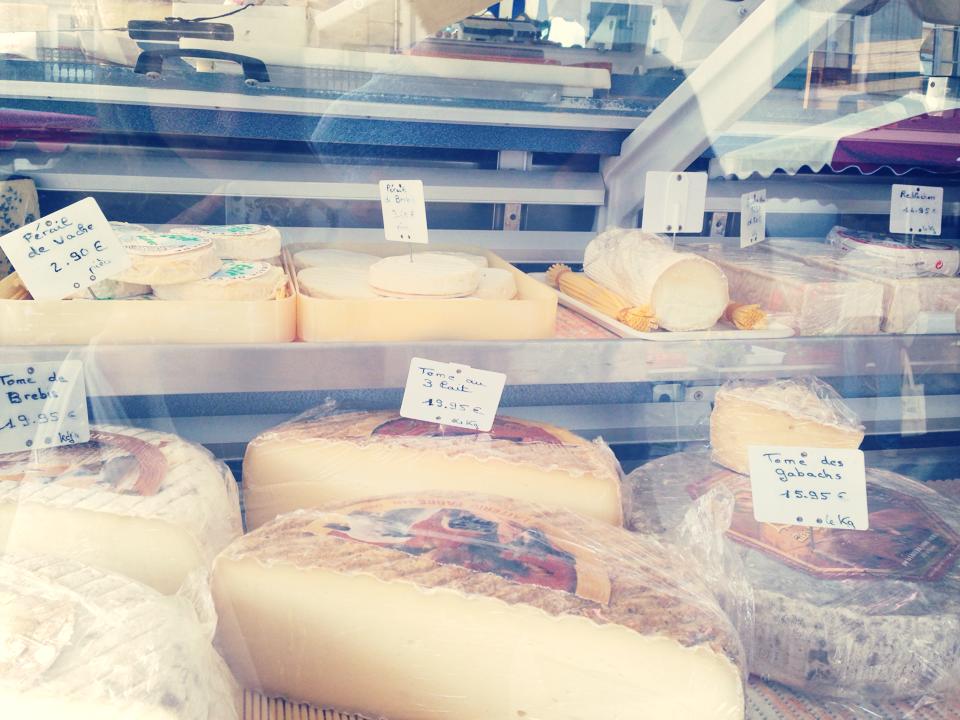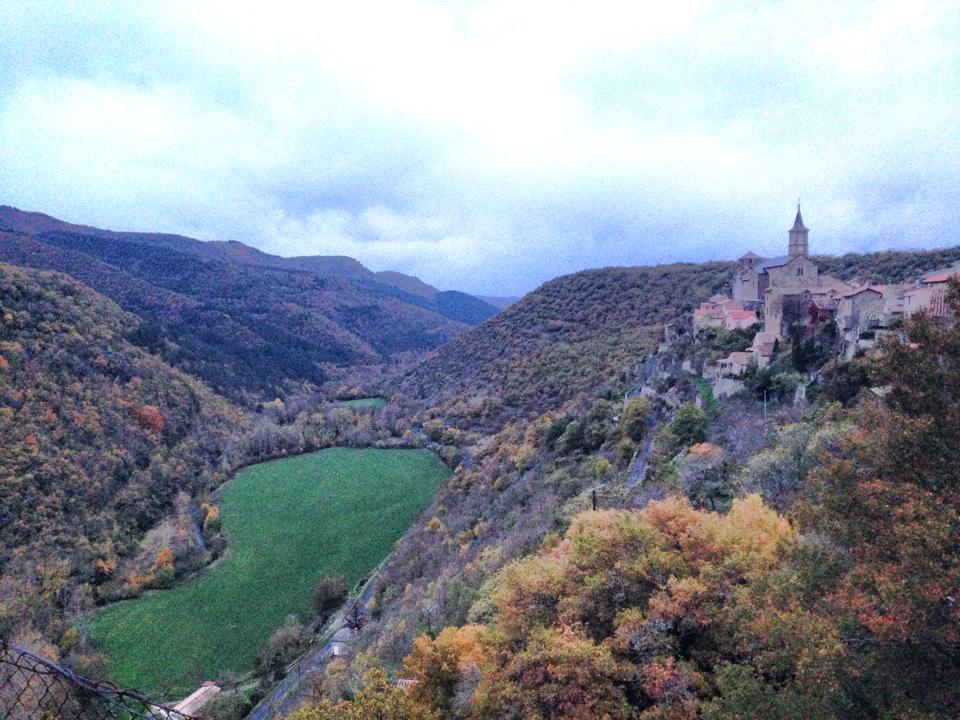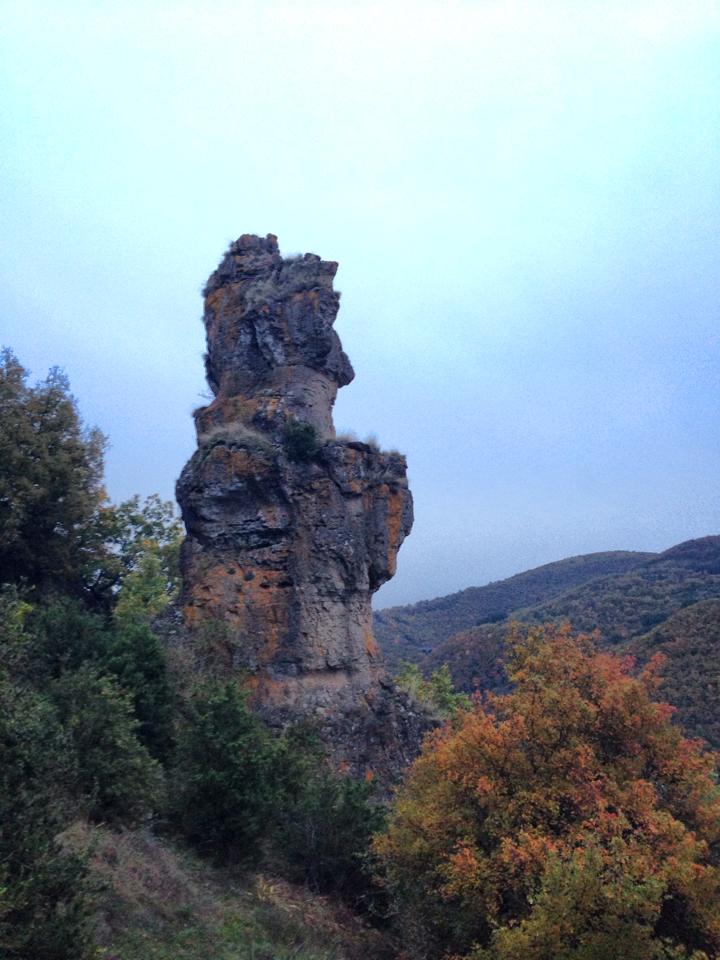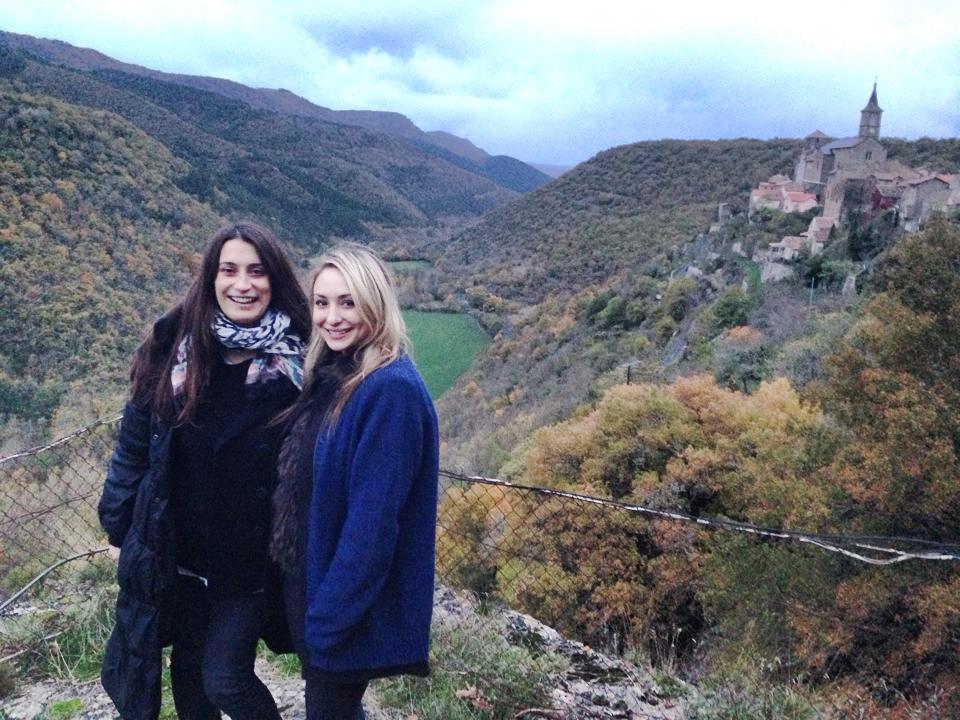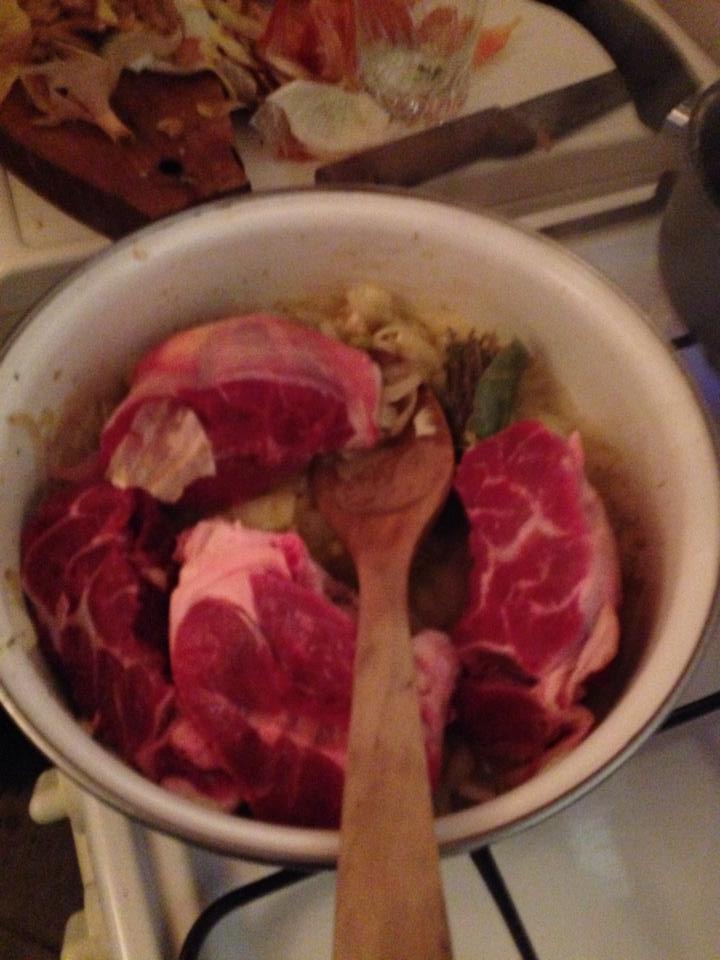Bringing France Home
Pot-au-Feu
What to do after being home not even a full 24 hours after a two week tour of France? Make a traditional dish and fill your home with the fantastic smells of the classic french cuisine, of course! I have to admit, I am quickly becoming a bit of a Francophile. I had traveled to Paris a few times over the years, but hadn't left my "tourist bubble," so to speak. I did all of the typical tourist things: museums, shopping, sipping champagne and eating pomme frites at a sidewalk cafe, eating out for each and every meal. It is not to say that these things aren't absolutely fantastic in themselves, but after doing a more intensive tour in Italy this past January, my husband and I wanted to see France from a different point of view. So we rented a car and set out after a week in Paris and headed South. We don't like to have too many plans set in stone and prefer to travel on a whim just in case we hear of something from someone local or in the know during the journey that changes our course; so naturally we were delighted when our friend Caroline whom we had met in Paris in 2010, invited us to her country home in La Bastides Pradines, a tiny village of 100 residents in the Midi-Pyrenees region.
La Bastide Pradines
We knew we were in for a treat as we drove up into the isolated French mountainside. This year was particularly special to visit, as the warmer fall meant that the leaves were changing colors more slowly and the grass hadn't turned brown yet. Typically, you don't get such a wonderful variation of colors this late in the season, if at all. The village itself has been there for centuries, and Caroline's house has been in her family for over 100 years. Nestled among the golden, rust, and kelly green colored foliage, it made for truly a picturesque setting.
After unpacking a bit, we headed down the other side of the mountain into town to go to the farmer's market and "make groceries." I am from New Orleans, and in Louisiana we say "make groceries" as opposed to "grocery shopping." I loved to learn that the French translation of "grocery shopping" in English is "make groceries." It delighted me to hear Caroline say it in her pretty French accent, and made me realize how life in Louisiana is so influenced by its cultural roots and historical heritage.
In the town, we found all sorts of culinary whimsies. Fresh cheeses, including Roquefort which is made in a cave just outside of the town we were in. It is the only cave in the world where it can be made and officially classified as Roquefort. We found locally cured meats, fresh produce, and gorgeous pastries. After making a huge haul at the market, we headed back up the mountain to Caroline's house, opened a bottle of wine and prepped for our meal. Caroline had chosen to make Pot-au-Feu, a classic French beef stew. After cooking on the stove for 3-4 hours, the meat and vegetables are separated from the broth and served in two courses. The strained broth is served first, and is followed by the beef and vegetables which are almost always accompanied by strong dijon mustard, gherkins, and fresh bread and butter. The traditional recipe calls for potatoes, but since I am trying to trim up after filling out after two weeks of pastries, treats, and French wine, we skipped out on the potatoes and bread. Following is my tweaked low-carb recipe for the classic and amazing Pot-au-Feu. I look forward to sharing more of our stories from the Bal des Etoiles in Paris and our cross-country road trip. A very special thank you to Caroline for teaching me how to make this dish and sending me home with some wonderful memories!! If I feel very, VERY generous, I may share her grandmother's recipe for Tarte aux Pommes, the French version of the classic apple pie.
Bon Appetit!
Reagan
Pot-au-Feu
3 onions, 2 studded with cloves to perfume the meat, and one cut into large pieces
Enough cloves to stud two of the onions ("clous de girofle")
3 garlic cloves
"bouquet garni": bay leaf, fresh sprigs of thyme and fresh italian (flat-leaf) parsley, and a table spoon or two of peppercorns, wrapped in cheese cloth and tied with kitchen string (or the cheese cloth corners, it's up to you. Mine stayed just fine without kitchen string)
2-3 tbsp coarse sea salt, seasoned as the stew cools to your liking (I prefer mine heavily salted and peppered)
1lb carrots
3 turnips ("navets")
1lb parsnips ("panais") (I used more carrots and parsnips to accomodate for the omitted potatoes)
3 leeks
4-6 branches of celery
5-6 cloves of garlic peeled, 5-6 cloves of garlic with first skin left on (a trick Caroline taught me that is amazing!! The first skin creates what is like a little oven and leaves you with the most divine little pouch of buttery garlic in the world)
1.5 pounds beef shank with marrow bones
1.5 pounds of beef flank (or short ribs)
olive oil
butter
I began by setting two cast iron dishes on the stove; I filled my round dutch oven a little over half way with water and my large sautee pan (both le creuset enameled cast iron, I couldn't live without them!) with a tablespoon or so of olive oil poured in the pan. While the water was coming to a boil, I caramelized the un-studded and chopped onion in the olive oil with about 3 tablespoons of salted butter. I then browned the meat excluding the marrow bones, which are trimmed and added to the pot during the last twenty minutes of cooking time. I then added the browned meat to the pot of boiling water with the clove-studded onions and the bouquet-garni. I set aside the pan of butter and caramelized onions (you will place the meat back in and coat in the delicious mixture after you separate the broth, meat, and vegetables). Allow the pot to bring back to a boil, then reduce to a simmer and cook the meat, bouquet-garni, and cloved onions for 1 hour. After 1 hour, add your peeled and cubed vegetables (including the garlic) to the pot, and continue to cook for an additional hour to two hours. I brought mine to a boil for the first 15-20 minutes after adding the vegetables, then reduced to a simmer. Add the marrow bones the last 20-30 minutes to cook. When cooking is finished, I salted and peppered the stew to taste, then removed the meat and placed in the sautee pan and coated in the caramelized onions and butter. I also removed the vegetables and set aside in another serving dish. You can then strain your broth, or leave it with the tiny pieces of vegetable debris. I left the vegetable debris in the broth, which was mostly leek, and it was delicious!! The broth is served first, followed by the meat and vegetables with the dijon and gherkins as condiments. Pair with a good French red (we like anything from the Bourgogne region) and enjoy!!!
Next On The Blog: The Bal des Etoiles
